Banarasi Sarees: A Timeless Treasure of Indian Textile
08/02/2024 2024-07-02 15:54Banarasi Sarees: A Timeless Treasure of Indian Textile

Banarasi Sarees: A Timeless Treasure of Indian Textile
Source: IndiaMart
Banarasi Sarees: A History Steeped in Tradition
The Banarasi saree is not just a garment; it’s a legacy. Woven in the holy city of Varanasi, also known as Banaras, for centuries, these sarees are renowned for their intricate designs, rich colors, and luxurious fabrics. They are a testament to the skill and artistry of Indian weavers, passed down through generations.
The origins of Banarasi sarees can be traced back to the Mughal era when the city of Varanasi was a thriving center of trade and commerce. Mughal emperors, known for their love of luxury, patronized the weavers of Banaras, leading to the development of exquisite techniques and designs.
Over the centuries, Banarasi sarees have evolved, incorporating influences from various cultures and eras. The British Raj saw the introduction of floral prints and geometric patterns, while the post-independence period witnessed a revival of traditional motifs and designs.
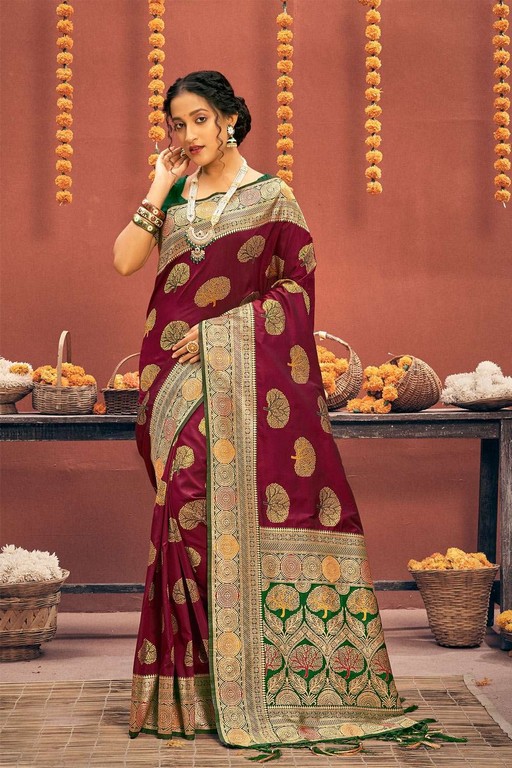 Source: Shopkund
Source: Shopkund
Evolution Through the Ages
Over the centuries, Banarasi sarees have evolved, incorporating influences from various cultures and eras.
- The British Raj saw the introduction of floral prints and geometric patterns.
- The post-independence period witnessed a revival of traditional motifs and designs.
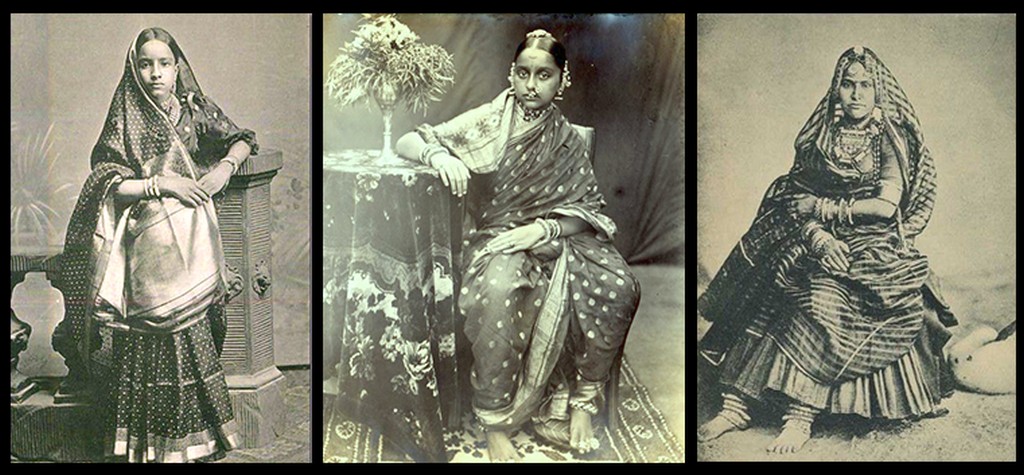 Source: Indian Dresses
Source: Indian Dresses
The Allure of Banarasi Sarees
Several factors contribute to the allure of Banarasi sarees:
- Exquisite Fabrics: Traditionally woven from pure silk, Banarasi sarees are known for their soft texture, delicate drape, and lustrous sheen. Other fabrics used include katan silk, organza, and georgette, each offering a unique look and feel.
- Intricate Designs: Banarasi sarees are adorned with intricate designs that are woven using fine threads of gold, silver, or zari. These designs often depict floral motifs, paisleys, geometric patterns, and scenes from Indian mythology.
- Rich Colors: Banarasi sarees come in a wide range of colors, from vibrant hues to subtle pastels. The use of natural dyes adds to the beauty and richness of the fabric.
- Symbol of Heritage: Owning a Banarasi saree is considered a privilege, as it represents a piece of India’s rich cultural heritage. These sarees are often passed down through generations, becoming cherished family heirlooms.
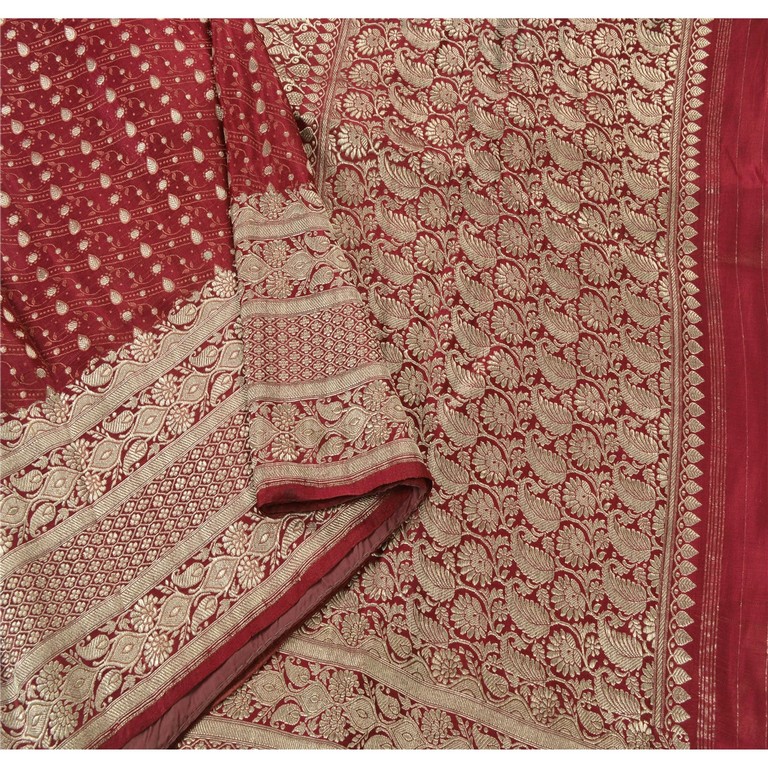 Source: Sanskriti Vintage
Source: Sanskriti Vintage
Different Types of Banarasi Sarees
There are several different types of Banarasi sarees, each with its unique characteristics:
- Katan Silk Sarees: These sarees are made from pure katan silk, known for its strength and durability. They are often adorned with intricate zari work and are considered to be the most luxurious type of Banarasi saree.
- Organza Sarees: These sarees are made from organza silk, a lightweight and translucent fabric. They are perfect for summer wear and are often decorated with delicate floral prints.
- Georgette Sarees: These sarees are made from georgette, a slightly crinkled fabric that is easy to drape. They are available in a wide range of colors and designs, making them a popular choice for everyday wear.
- Brocade Sarees: These sarees are woven using the brocade technique, which creates a raised pattern on the fabric. They are often decorated with gold or silver threads, making them ideal for special occasions.
Wearing a Banarasi Saree
Banarasi sarees can be worn for a variety of occasions, from weddings and festivals to formal events and everyday wear. The way you drape a Banarasi saree can also vary depending on the occasion and your style.
Here are some tips for wearing a Banarasi saree:
- Choose a saree that flatters your body type and complexion.
- Pair your saree with the right blouse and petticoat.
- Accessorize with jewelry that complements the saree.
- Drape the saree neatly and securely.
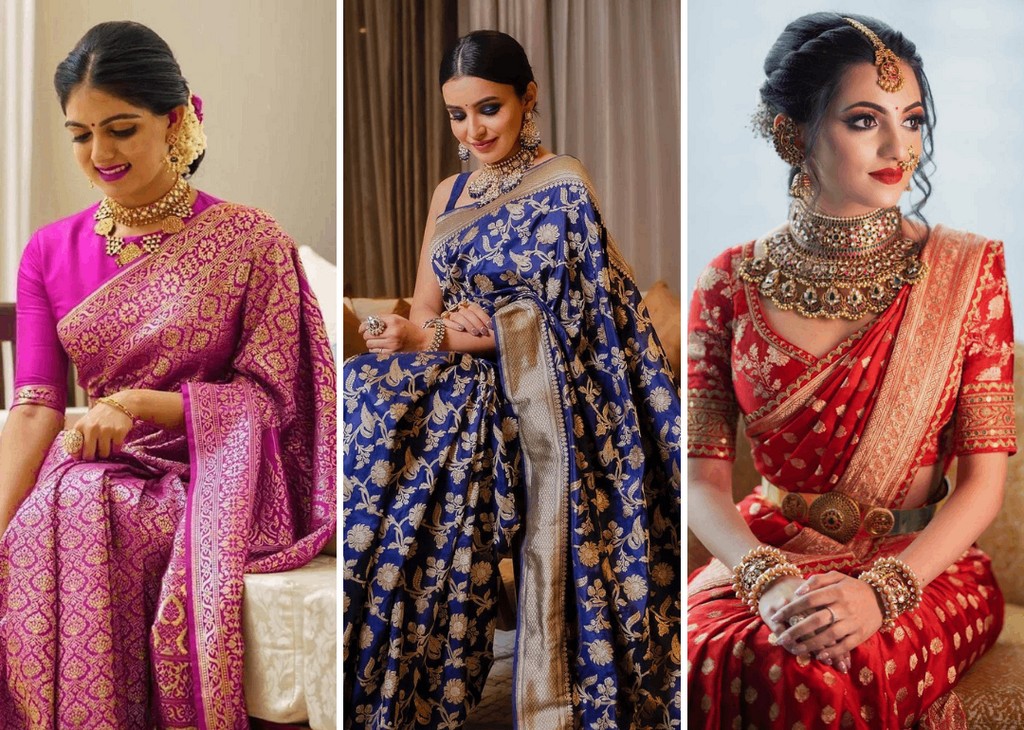
Source: ShaadiWish
Caring for Your Banarasi Saree
Banarasi sarees are delicate garments that require special care. Here are some tips for caring for your Banarasi saree:
- Dry clean your saree only when necessary.
- Hand wash your saree in cold water with a mild detergent.
- Do not wring or twist the saree.
- Iron your saree on a low setting.
- Store your saree in a cool, dry place away from direct sunlight.
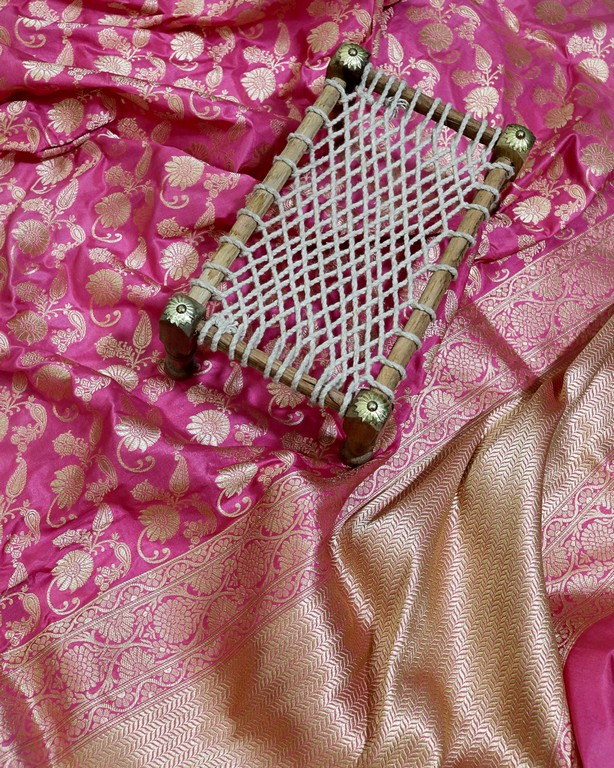
Silk Kothi
The Enduring Allure of Banarasi Sarees in 2024
The Banarasi saree, a timeless treasure of India, will continue to captivate hearts and wardrobes in 2024. Woven in the holy city of Varanasi for centuries, these sarees are renowned for their intricate designs, rich colors, and luxurious fabrics. They are a testament to the skill and artistry of Indian weavers, passed down through generations.
Modern Interpretations
In 2024, Banarasi sarees continue to be relevant and fashionable due to several modern interpretations:
- Fusion Designs: Weavers are experimenting with fusion designs that blend traditional motifs with contemporary elements, creating sarees that are both stylish and timeless.
- Lighter Fabrics: To cater to modern preferences, weavers are using lighter fabrics like georgette and organza, making the sarees more comfortable to wear in warmer climates.
- Pre-draped Sarees: Pre-draped sarees are gaining popularity, especially among younger women who appreciate the convenience they offer.
- Celebrity Endorsements: Celebrities like Deepika Padukone, Priyanka Chopra, and Sonam Kapoor have been spotted wearing Banarasi sarees, further boosting their popularity.
A Sustainable Future
The future of Banarasi sarees looks bright. With growing awareness of sustainability, there is a focus on using eco-friendly dyes and weaving techniques. Additionally, government initiatives are aimed at supporting weavers and preserving this traditional craft.
Owning a Banarasi saree is not just about wearing a beautiful garment; it’s about connecting with India’s rich cultural heritage and supporting the livelihoods of skilled artisans. As the world continues to embrace sustainable fashion, the timeless appeal of the Banarasi saree is sure to endure for generations to come.













